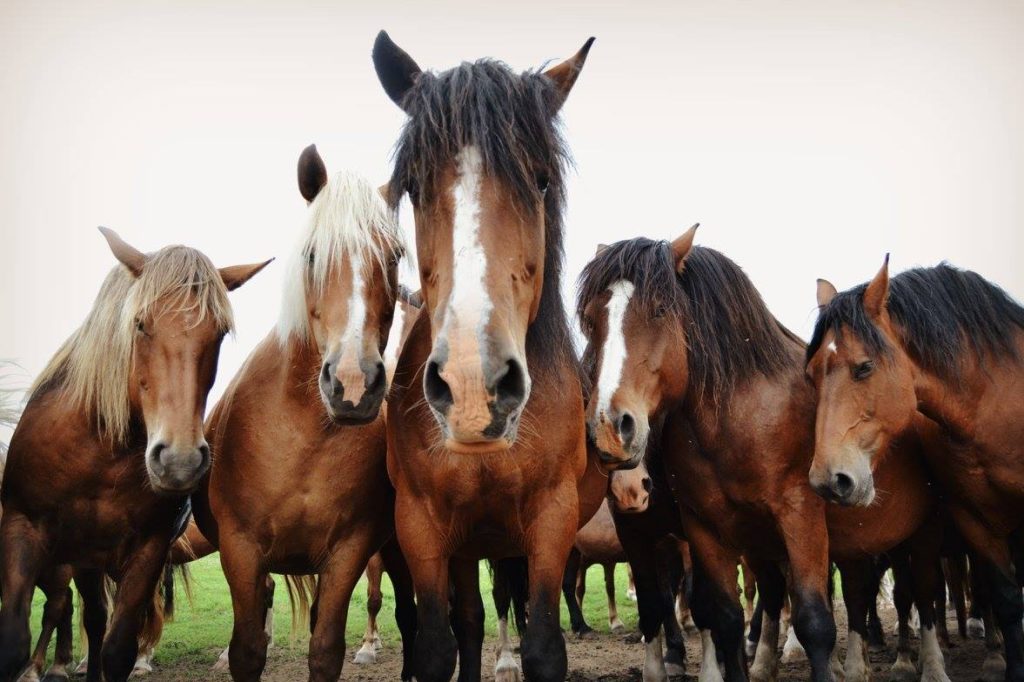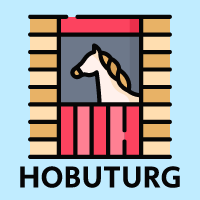The Estonian Draft is a cold-blooded horse breed that is based on the continual crossing of Ardennes from Belgium and Sweden with Estonian Native horses. The breed is noted for its strong constitution, well developed musculature and sturdy bone structure. It is medium sized, stout, and relatively short legged. Its head is large and its nose is long. Its neck is short and muscular, and its back is also short, but wide. The Estonian Draft is calm by nature as might be expected, and energetic and well disposed to people. The colour frequency of the Estonian Draft is currently this:
- chestnut – 58%,
- bay – 36%,
- roan – 4%,
- black – 2%,
As a result of breeding, the proportion of bay horses is currently on the fastest rise.

The Ardennes Horse
When we speak about the Ardennes breed component of the Estonian Draft, we can actually go back to the beginnings of European history. The Ardennes are an ancient breed of horse whose history can be traced back even to the time of Julius Caesar and the Roman Republic. The horses of that time were obviously a little different from the Ardennes we know today, both in terms of appearance and attributes. They were lighter and used often for riding as well. You could say that the Golden Age for Ardennes was the time of the French Revolution and the Napoleonic wars that followed, a little more than two centuries ago. They made a significant contribution to the success of the Grande Armée, proving themselves to be calm, resilient, and tough survivors in the most difficult conditions. Many (possibly even most) draft horse breeds of today are based on the Ardennes. In the Baltics, the Lithuanian Draft and the Latvian Ardennes are similarly bred by the crossing of the Belgian Ardennes and the local aboriginal horse breed.
The Estonian Ardennes
The first 12 Ardennes horses (2 stallions and 10 mares) that were used in breeding were brought to Estonia in 1862 on the initiative of the scholar Alexander von Middendorff, and they were placed in the Tori Stud. Initially, the breed of Estonian draft horses was in fact called the “Estonian Ardennes”. The first attempt to coordinate the breeding of the Estonian draft was made in 1911 when the Baltic Cold-Blooded Horse Breeders’ Society (Et: Baltimaade Külmavereliste Hobuste Kasvatajate Selts) was formed. Their activities were ended soon, however, by the outbreak of the 1st World War, and they were not resumed when the war was finished. In 1920, there was a nation-wide survey of horse populations, made by the Agricultural Ministry of the young Estonian Republic. What they found was that the Estonian Ardennes was most populous in Northern Estonia, and in the counties of Tartu and Võru to a lesser extent. This survey resulted in a favourable governmental decision for the breeders of Ardennes, i.e. a decision to support the breeding of three local horse breeds, which were the Estonian Native, the Estonian Ardennes, and the Tori.
The Ardennes component of the Estonian draft horse was initially inserted into the breed both in a coordinated and in a non-coordinated way. Many North Estonian barons had brought Ardennes into their stables at the end of the 19th and at the beginning of the 20th century, to improve the pulling capability of their horses, but this was not coordinated. In 1913, many Ardennes were brought to Estonia from Sweden, and placed into manors in the counties of Viru and Harju. The Estonian Republic took an active part in breeding as well by importing 103 Ardennes between 1923 and 1935. The Tori Stud, which has always been influential in Estonian horse breeding, opened a separate section for Ardennes in 1931, which was also beneficial for the breed. This section was designed to house 10 mares and 1-2 stallions at a time.

The most suitable living conditions for Ardennes in Estonia were found to be the Northern part of the country where their population inclined quickly. The major factor is lime in the soil, which is favourable for legumes to flourish, which in turn make the vegetation rich in calcium, phosphorus, and protein. This is important for the Estonian heavy horse’s swift development. This is actually one of the advantages of the breed – it matures quickly, both in terms of physiology and economics. If the feeding conditions are good, a young Estonian Draft can gain even a little more than 1 kg of weight per day.
The Estonian Draft Horse
In 1948, when the 2nd World War had been over for a few years, the Estonian Draft Horse Breeding Council (Et: Eesti Raskeveohobuste Riiklik Aretustõulava) started work in Rakvere, and took control of the Ardennes stud book. Breeding was resumed – but this was now organised into collective farms. In 1953, they introduced 10 Soviet Drafts into the breed because the number of local stallions was low. In the same year, the breed got the name we know today, and came to be known as the Estonian Draft. In 1968, it became a pure breed and they ended the practice of separating the stud book for mares into pure-breeds (breed mark A) and cross-breeds (of the Estonian Native and the Ardennes horse; breed mark EA).
The breeding of the Estonian Draft went into the hands of private enthusiasts when the Soviet Union collapsed in 1991 and the Republic of Estonia was reestablished. Without state support, the breed went into a swift decline in terms of numbers. In 2003, the Estonian Draft was listed as an endangered breed, and its new preservation and breeding programme was introduced. From 2005 on, you can get financial aid from the Estonian state if you breed Estonian Drafts.

Until 2008, the Estonian Draft was bred mainly through pure breeding with a little insertive breeding as well. From sister breeds, you could use Swedish and Belgian Ardennes, and Soviet and Lithuanian Drafts. Additionally, they used a Schleswig Coldblood stallion called Herold (2170 ER) in a special programme from 1993 to 2005, and a Vladimir Heavy Draft stallion called Vezdehod (2182 ER) from 2003 to 2005. From 2008 onward, however, you can only use pure breeding for all endangered breeds, and this applies to the Estonian Draft as well.
The Estonian Draft has two stud books at present. One of these is managed by the Estonian Horse Breeders’ Association (Et: Eesti Hobusekasvatajate Selts), and the other by the Finnish-based Eestin Raskaat Vetohevoset ry. From 2017 on, you can get support from the Estonian state for breeding Estonian Drafts also for horses that are listed in the Finnish stud book, if they reside in Estonia.
Characteristics of the Estonian Draft Horse
You can use Estonian Drafts for breeding until the age of 16-18 for stallions, and the age of 14-16 for mares. A shortcoming of the breed is its rather low fertility, compared for example to the Tori or the Estonian Native. The Estonian Draft is usually strong in terms of health. If it is kept in good conditions, they will usually reach the age of 22-25.
The Estonian Draft is a great worker, as draft horses normally are. It is keen to pull, and its movement is strong. A good example of its ability is the stallion Naksur who covered a kilometre in 2 minutes and 37 seconds in the trot in 1995. In 1996, it walked a kilometre in 8 minutes and 26 seconds. Another good sporting example was the mare Neevi who pulled a sledge of two tonnes in 1998.

The main function of the Estonian Draft nowadays is entertainment. It has become a popular riding horse as well, perhaps surprisingly. This is mainly due to its calm disposition. In addition to riding, the Estonian Draft is used for environmentally friendly forestry projects to some extent, and this is likely to happen more often in the future. Perhaps it is indeed in eco-friendly forestry that the Estonian Draft’s future lies. As the Estonian people grow more prosperous, their wish to preserve their natural environment will strengthen. In the woods, the horse is much gentler to the forest floor than the forest harvester, and this is a great advantage.
Written by Kristjan Korsten, the editor at Hobuturg.ee. Sources: The Estonian Horse Breeders’ Association, Eestin Raskaat Vetohevoset ry (Finland), the Estonian Food and Veterinary Office, Nurmenuku Leisure Center, the newspapers “Maaleht” and “Postimees”, Wikipedia, etc. Last updated in January 2018
